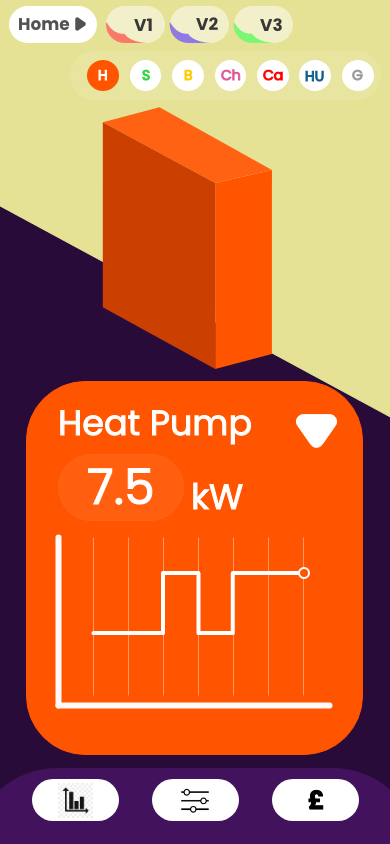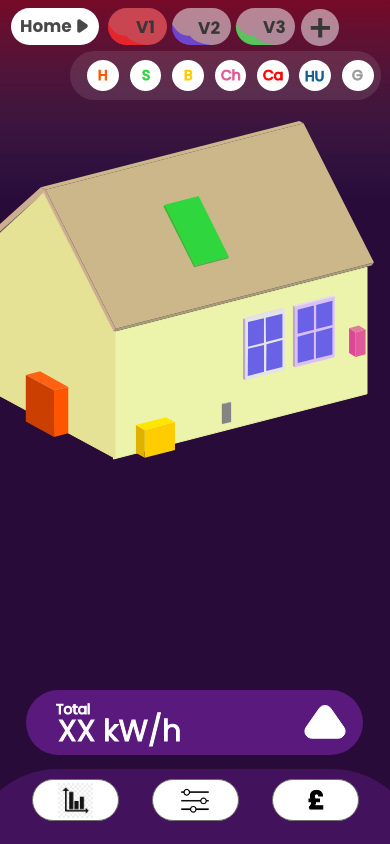Home simulator: concept testing
I was tasked with developing a concept for a home simulator web app. Through initial competitor analysis, I noted the strong presence of pictorial home depictions, which I used as the basis for the initial design.
After creating mock-ups of the app, I showcased them to a number of potential users to gather feedback. This proved valuable, as I discovered that users could become confused about energy savings. For example, the addition of an electric vehicle would increase electricity costs. Without considering the reduction in fuel costs, some home simulations would show an overall cost increase, where a saving should have been reflected.
Following this feedback, I pivoted towards improving the user onboarding journey to gain a more holistic view of their energy setup. This allowed us to account for gas heating costs and fuel costs from internal combustion engine (ICE) vehicles.
To further illustrate the concept to potential stakeholders, I also created an Excel-based calculator. This combined simulation data (a calculation of electricity costs) with external variables to give customers a clearer picture of total energy savings. It involved factoring in various heat pump sizes, as well as estimating the coefficient of performance (COP) based on house size and age. The number of miles the user drove was also key as, even for ICE vehicles, we could calculate current fuel costs (based on average fuel price and MPG) and compare that to both an unoptimised and an optimised simulation of an EV.

